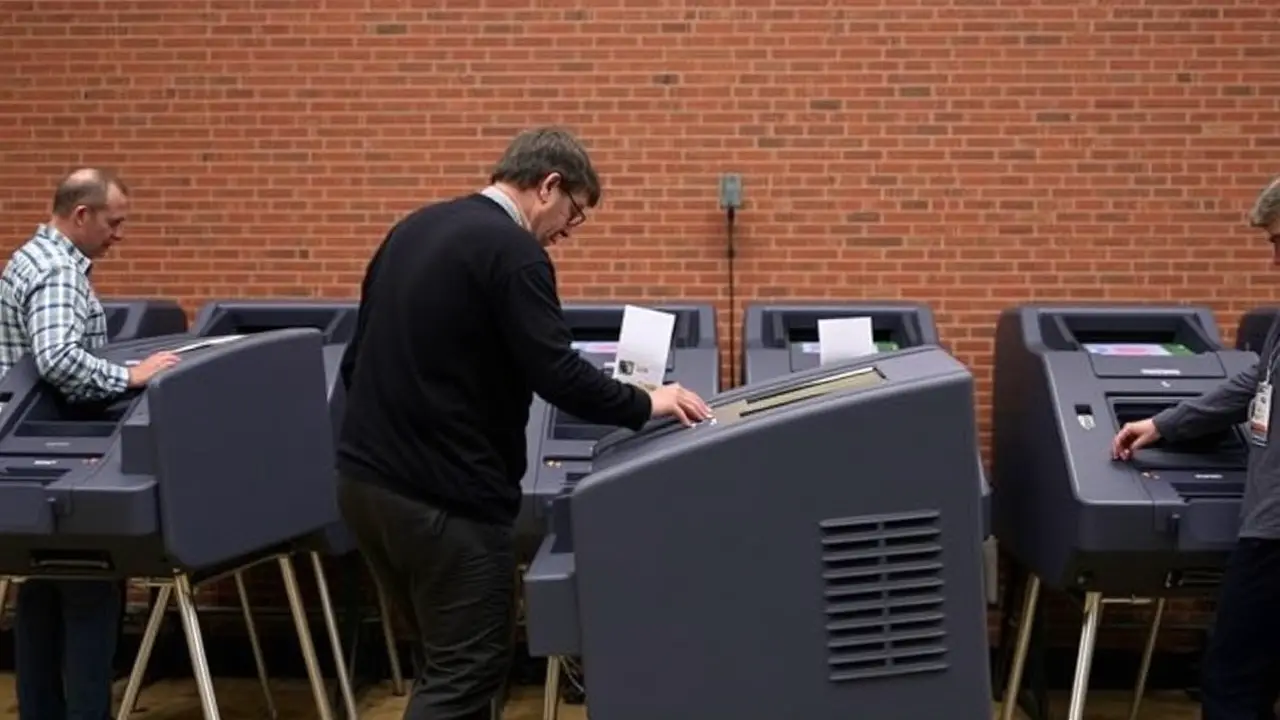Electronic Voting Machines (EVMs) have revolutionized electoral processes across the globe, offering efficiency, speed, and reduced dependency on paper ballots. However, as with any technology, they are not immune to scrutiny. Allegations of EVM fraud have sparked debates worldwide, questioning the integrity of democratic processes
What is EVM Fraud?
EVM fraud refers to any manipulation or tampering with electronic voting machines to alter election results. This can involve hacking, software manipulation, hardware tampering, or operational irregularities, potentially compromising the integrity of an election.
Common Allegations and Concerns
- Tampering with Software
Critics argue that malicious actors could manipulate the source code of EVMs to favor certain candidates or parties. If the software is not adequately secured, unauthorized access could alter vote counts without leaving a trace. - Hardware Manipulation
Physical tampering with the device, such as introducing rogue chips or altering internal circuits, can disrupt the accurate functioning of EVMs. - Transmission Vulnerabilities
In cases where EVMs are linked to a central server or data is transmitted electronically, there is a potential risk of interception or manipulation during the transmission of results. - Lack of Transparency
Unlike paper ballots, which provide a tangible record, electronic votes exist in digital form. Critics argue that the absence of a verifiable paper trail makes it difficult to audit or confirm election outcomes. - Operational Mismanagement
Mishandling during storage, transportation, or operation of EVMs can lead to errors or accusations of foul play. Instances of machines malfunctioning or votes being attributed to the wrong candidates have further fueled skepticism.
Notable Incidents and Allegations
- United States (2000s): Allegations of voting machine vulnerabilities have been prominent in U.S. elections. Critics have pointed to weaknesses in machines manufactured by certain companies, citing hacking demonstrations and system flaws.
- India (2019): During the general elections, several political parties raised concerns over alleged EVM tampering. Reports of mismatches between votes cast and results generated sparked calls for increased use of Voter Verified Paper Audit Trails (VVPATs).
- Kenya (2017): Claims of hacking into the electoral commission’s systems brought the credibility of the presidential elections into question. This led to a nullification of the election results and a re-run.
Preventive Measures
- Implementation of VVPATs
Voter Verified Paper Audit Trails are physical printouts of votes cast electronically. VVPATs allow for cross-verification and ensure that voters can confirm their choices before final submission. - Robust Security Protocols
Strengthening encryption, regular software audits, and securing the supply chain of EVM components can minimize vulnerabilities. - Independent Testing
Machines should undergo rigorous third-party testing to identify and address potential flaws before deployment. - Increased Transparency
Involving multiple stakeholders, including political parties, independent observers, and technical experts, in the testing and deployment process can foster trust. - Public Awareness
Educating voters and election officials on the functionality and limitations of EVMs can reduce misinformation and build confidence in the system.
EVM Fraud Allegations in Maharashtra: Examining the Claims
Electronic Voting Machines (EVMs) have played a pivotal role in modernizing elections in India, ensuring speed and reducing human error. However, allegations of EVM fraud have often emerged, casting doubt on the democratic process. In Maharashtra, particularly during recent elections, claims of EVM tampering and discrepancies have sparked debates among political parties, election officials, and voters alike.
Background on EVM Use in Maharashtra
Maharashtra, being one of India’s largest states, has extensively used EVMs in both Assembly and Lok Sabha elections. The introduction of Voter Verified Paper Audit Trails (VVPATs) was meant to address concerns about transparency and accountability. However, allegations of irregularities have persisted, especially during contentious elections.
Key Allegations of EVM Fraud in Maharashtra
- Mismatch Between Voter Expectations and Results
Several political parties, especially in the aftermath of the 2019 Assembly elections, alleged that the results did not reflect the ground reality. Some claimed that the EVMs had been tampered with to benefit specific political entities. - Malfunctioning EVMs
Reports of EVM malfunctions were widespread during certain constituencies’ polling days. Instances where pressing one button allegedly recorded votes for another candidate were cited as evidence of tampering. - Voter Disenfranchisement
Allegations emerged about EVMs rejecting votes or malfunctioning in regions with a strong presence of opposition voters. Such claims added to the suspicion that EVMs were being deliberately manipulated. - Delayed Data Transmission
Critics pointed out delays in the transmission of results from EVMs to counting centers. This, combined with reports of missing VVPAT machines, led to accusations of potential tampering during the transit phase.
Specific Incidents in Maharashtra
- 2019 Maharashtra Assembly Elections:
Opposition parties, including the Congress and the Nationalist Congress Party (NCP), raised concerns about EVM reliability. They demanded cross-verification of EVM results with VVPATs in a significant number of constituencies, alleging that the machines may have been tampered with to favor the ruling party. - By-Elections and Local Body Polls:
Allegations of EVM fraud have not been limited to state or national elections. Even in local body polls, parties claimed that EVM tampering was used to influence results in municipal elections.
Steps Taken to Address Concerns
- Use of VVPATs
The Election Commission of India (ECI) has increased the use of VVPATs alongside EVMs to ensure greater transparency. However, the demand for full VVPAT count verification in Maharashtra was not fully met, leading to dissatisfaction among critics. - Technical Audits
The ECI conducted audits of EVMs to reassure the public about their integrity. However, opposition parties questioned the thoroughness and independence of these audits. - Election Commission Statements
The ECI repeatedly asserted that EVMs are tamper-proof and that adequate safeguards are in place. However, these assurances have not entirely quelled public and political skepticism.
Political and Public Reaction
The allegations have polarized opinions. Supporters of the ruling party dismissed the claims as baseless and politically motivated, while opposition parties used the issue to rally support and question the credibility of the electoral process. Public confidence in EVMs has taken a hit, particularly in constituencies where irregularities were alleged.
Preventive Measures Going Forward
- Comprehensive VVPAT Verification
Conducting cross-verification of a significant percentage of VVPAT slips with EVM results can address transparency concerns. - Independent Oversight
Engaging independent observers, technical experts, and even international electoral bodies for EVM testing and certification could enhance credibility. - Public Demonstrations and Awareness
Regular public demonstrations of EVM functioning can help build trust among voters and dispel misinformation. - Stringent Monitoring of EVM Storage and Transit
Strengthening security protocols for EVM storage and transportation can prevent allegations of tampering.
Conclusion
While EVMs have transformed elections in Maharashtra and across India, allegations of fraud undermine public confidence in the democratic process. Addressing these concerns through transparency, robust safeguards, and greater accountability is essential to uphold the integrity of elections. In a democracy, trust in the voting system is non-negotiable, and steps must be taken to ensure that EVMs remain a reliable tool for free and fair elections.
While EVMs offer a modern solution to the challenges of traditional voting systems, ensuring their reliability and security is essential for maintaining public trust in democratic processes. Technological advancements must go hand in hand with robust oversight, transparency, and accountability. By addressing vulnerabilities and fostering open dialogue, electoral systems can strike a balance between innovation and integrity.
10 FAQs on EVM Fraud in Maharashtra
- What is EVM fraud?
EVM fraud refers to allegations of tampering or manipulation of electronic voting machines to alter election outcomes. - Why is EVM fraud a concern in Maharashtra?
Claims of EVM tampering have surfaced in Maharashtra, especially during high-stakes elections, raising concerns about transparency and integrity in the electoral process. - What are the main allegations of EVM fraud in Maharashtra?
Allegations include software tampering, mismatches between votes cast and results, malfunctioning machines, and delayed result transmission. - What specific incidents of EVM fraud have been reported in Maharashtra?
Allegations surfaced during the 2019 Assembly elections and various local body polls, with opposition parties demanding VVPAT verification. - How does VVPAT help in preventing EVM fraud?
VVPAT provides a paper trail for each vote, allowing cross-verification between electronic results and physical records to ensure transparency. - What steps has the Election Commission taken to address these concerns?
The Election Commission has conducted technical audits, introduced VVPAT systems, and asserted that EVMs are tamper-proof. - Have allegations of EVM fraud in Maharashtra been proven?
While concerns have been raised, no conclusive evidence of large-scale EVM fraud has been presented in Maharashtra. - What is the political response to EVM fraud allegations in Maharashtra?
Opposition parties have called for increased transparency, while ruling parties have dismissed the claims as politically motivated. - Can EVMs be hacked or tampered with?
Experts argue that EVMs are designed to be secure, but critics point out potential vulnerabilities in their hardware and software. - What can be done to restore voter confidence in Maharashtra’s elections?
Measures include independent audits, comprehensive VVPAT verification, and public awareness campaigns to ensure electoral integrity.

